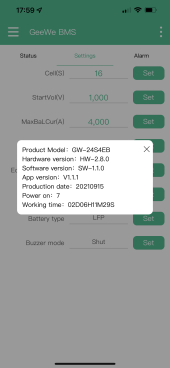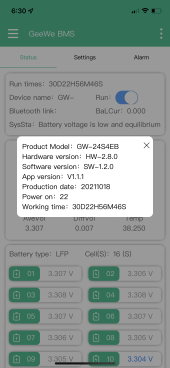I have several Neey clones that work great but can’t shut them off at a pre determined voltage and reasonable back on voltage (voltage spread too great). I know the newer ones can when using the android app.
The only way to turn it on or off is through the iOS app which isn’t going to work. I tried to disconnect a lead (not the first or last) which put it into fault and stopped it and it looked good when reconnected but it wanted a restart through the add again…damn. Has anyone found terminals inside that can halt and start the balance without app interaction.
The thing balances fast with big ah batteries but I can’t be there to turn it on above 3.4vpc and off below. Dang shame because it’s useless as is.
The only way to turn it on or off is through the iOS app which isn’t going to work. I tried to disconnect a lead (not the first or last) which put it into fault and stopped it and it looked good when reconnected but it wanted a restart through the add again…damn. Has anyone found terminals inside that can halt and start the balance without app interaction.
The thing balances fast with big ah batteries but I can’t be there to turn it on above 3.4vpc and off below. Dang shame because it’s useless as is.






